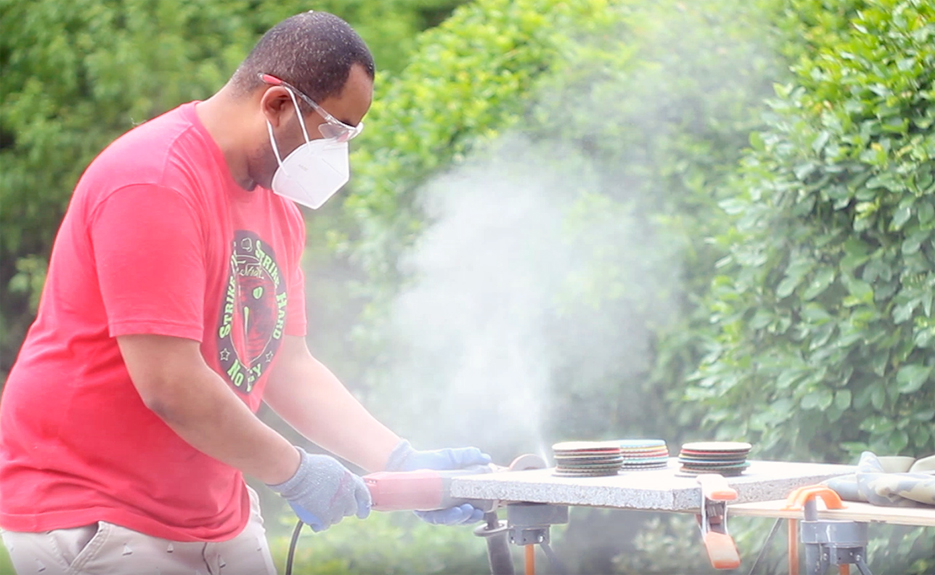This is Happening
Sharon Koehler
Stone Industry Consultant
 We have all been reveling in the engineered stone (quartz) boom. Avanza, Cambria, Vicostone, PentalQuartz, Q Quartz, Alleanza, Silestone, Viatera, etcetera, etcetera. The list seems endless. New brands pop up every day. New colors and styles arrive almost as often.
We have all been reveling in the engineered stone (quartz) boom. Avanza, Cambria, Vicostone, PentalQuartz, Q Quartz, Alleanza, Silestone, Viatera, etcetera, etcetera. The list seems endless. New brands pop up every day. New colors and styles arrive almost as often.
The Breton technology revolutionized the engineered stone creation process, making it a consistently, in most cases, beautiful product that enhanced the décor of homes and businesses as well.
Granted, when ES first appeared on the stone scene, some shops fought it, still leaning toward the natural stone their business was created on. However, as time went by, engineered stone sales grew quickly. In a lot of areas, engineered stone outsells natural stone by a large margin. It has been a boom for many shops in our industry.
Now, let’s address the elephant in the room… Silicosis. If you have worked in the industry for more than say…10 minutes, you know what Silicosis is. In case you don’t know, Silicosis is a treatable but incurable lung disease that can be fatal. It is caused by breathing in fine silica dust and is considered to be one of the most lethal occupational hazards. Natural stone, like granite and marble do have some silica naturally occurring in them.
The prevention of Silicosis is why we do a lot of the special fabrication procedures in this industry. We cut using water. We use vacuum tools to capture the dust and we wear masks and respirators, just to name a few. OSHA has set strict guidelines for how much silica dust we can be exposed to, and the fines are steep for non-compliance, either willfully or by accident.
So why are we talking about engineered stone and Silicosis both at the same time? Because, my friends, they are connected. And not in a good way. Marble normally has a silica content of 10% or less. Granite usually contains 45% or less. Engineered stone tops the list at a normal 90% silica rate or higher.
What does all this mean? It means that silicosis cases worldwide have risen exponentially with the rise in engineered stone sales and fabrication and because of this, bigger things are starting to happen.
In December 2023, the Australian government issued a national ban on the manufacture, supply, and use of engineered stone. It was a unanimous decision of all of Australia’s Commonwealth, state, and territory workplace ministers. The ban goes into effect this coming July 1, 2024.
Meanwhile, closer to home: This past December 2023, the State of California Department of Industrial Relations issued an emergency, temporary standard on crystalline silica to help protect workers from the disease. It outlines methods of compliance, respiratory protection, housekeeping procedures and more.
You can check it out at the CA Department of Industrial Relations website: https://www.dir.ca.gov/DIRNews/2023/2023-93.html.
These two most recent mandates from Australia and California are the latest in a long series of warnings about engineered stone and silicosis. It’s been going on for years, but the Australian ban is by far the most severe and attention-getting piece of news to hit this industry in quite a while. Will it open the floodgates? Who knows.
If you are confused (like a lot of us are) about the standards and requirements for silica dust exposure and disease prevention, OSHA has many resources dedicated to this issue. The OSHA Education Center has a Silica Awareness Course: https://www.oshaeducationcenter.com/ . Just type silica training in the search bar and select Crystalline Silica Awareness. They also have numerous documents and web pages dedicated to this issue. (Beware: They haven’t revised their standards for silica exposure in construction for several years. However, they currently have an on-going study focused on this issue and many are predicting standard changes because of this study.)
Admittedly, OSHA’s regulations can be a bit tedious to wade through. If you want to look elsewhere, look no further than the National Stone Institute. NSI has several on-line courses you can take regarding this issue. There is Silica and Slab Safety, Crystalline Silica Exposure Prevention, plus What is Crystalline Silica? And there are PPE courses as well. They also have a page dedicated to silica resources that includes OSHA Standards and fact sheets regarding silica and Silicosis: www.naturalstoneinstitute.org/silica/ .
What does the future hold for engineered stone? Who knows? This ban in Australia may or may not open the flood gates to major changes worldwide. We will all just have to wait and see. Let’s just be safe while we wait.
Please send your thoughts and comments on this article to Sharon Koehler at Sharonk.SRG@gmail.com .